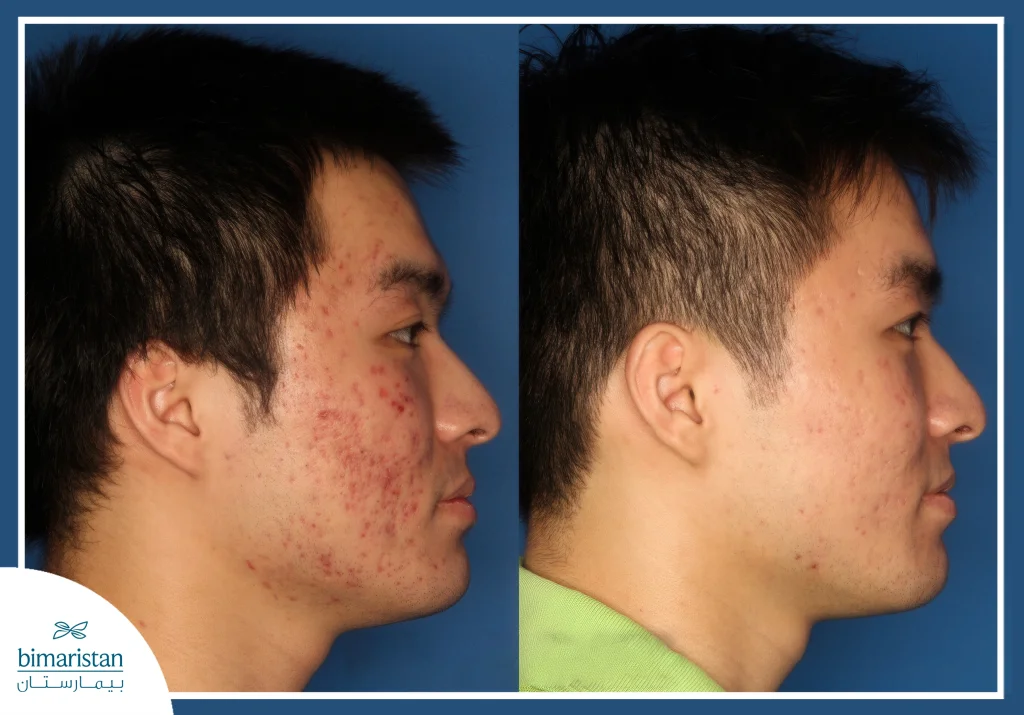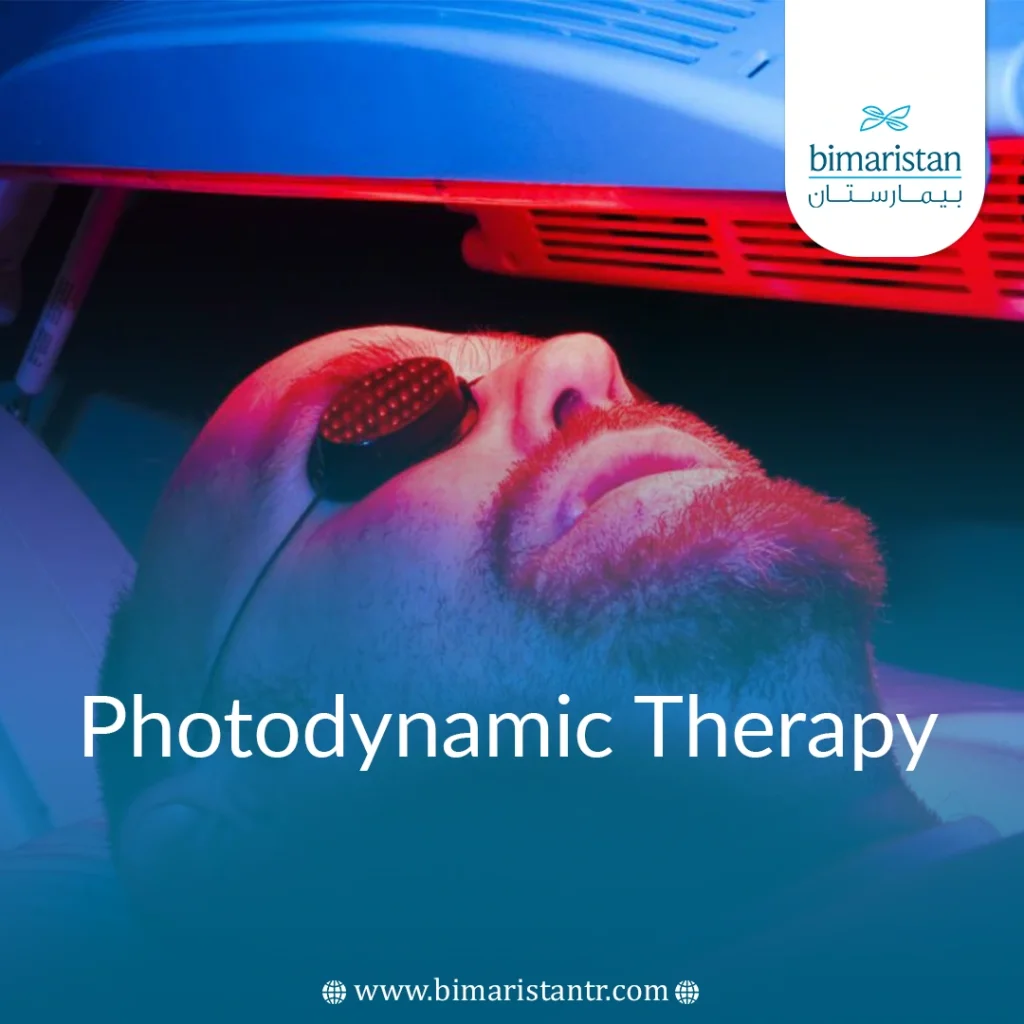Photodynamic therapy is a modern treatment method used in Turkey to treat skin lesions and some types of cancer. It is characterized by its minimally invasive, low-cost, and effective effects.

What is photodynamic therapy?
Photodynamic therapy is a relatively safe and effective treatment that can be performed in an outpatient setting. It is easy to apply, inexpensive and produces very good results when performed correctly.
Photodynamic therapy is performed in two stages. In the first stage, special chemical drugs that are sensitive to light, called photosensitizers, are administered. These drugs are administered orally, intravenously, or applied topically to the skin (ointments), as in the treatment of skin lesions.
In the second stage, a specific wavelength light source is focused on the area to be treated. The focused light activates the previously administered photosensitizer, triggering a reaction leading to cell destruction.
Photosensitizers are more readily absorbed by diseased cells, which increases the effectiveness and quality of the treatment by killing more abnormal cells.
In other words, and to summarize the above, photosensitizing agents are substances that cause no harm unless activated by light of a specific wavelength (usually a laser). When light is shone on them, they activate and trigger a reaction leading to cell destruction.
In what cases is photodynamic therapy used?
Photodynamic therapy can be used to treat a number of skin lesions and some types of cancer, in addition to some eye diseases. The most important conditions treated with PDT are:
- Acne and other skin diseases, such as psoriasis
- Precancerous skin lesions such as actinic keratosis
- Malignant skin tumors
- Esophageal cancer or Barrett’s esophagus (a precancerous condition)
- Pancreatic cancer and bile duct cancer
- Non-small cell lung cancer
- Some blisters result from certain viral infections
- Age-related macular degeneration
Advantages of Photodynamic Therapy
- Minimally invasive compared to other treatment methods such as surgery
- Relatively safe and has no long-term side effects when performed correctly
- Minimizes damage to normal cells, as diseased cells absorb photosensitizing drugs more effectively than normal cells
- Ability to direct light with high precision to the area to be treated, thus avoiding damage to neighboring cells
- Requires a short application period (10 to 45 minutes) Performed as an outpatient.
- Unlike radiation therapy, PDT can be repeated in the same area.
- Photodynamic therapy does not cause scarring in the treated areas.
- Relatively inexpensive.
Preparing before your photodynamic therapy session
If your doctor has recommended you undergo photodynamic therapy to treat or remove a skin lesion, here are some tips to follow.
On the day of your photodynamic therapy session, you should arrive at the hospital or clinic with normal skin, free of moisturizers, makeup, or sunscreen in the area to be treated.
If you have thick hair in the affected area, shave it at least two days before your treatment.
It is recommended to bring sun-protective clothing, such as sunglasses, hats, and gloves, as exposure to intense light after your treatment session can cause side effects such as swelling and redness.
It is recommended to stop applying topical vitamin A products to your skin one week before your photodynamic therapy session. During PDT
The photosensitizing medication is given either intravenously, orally, or applied topically as an ointment. The method of administration depends on the area to be treated.
After receiving the photosensitizing medication, you can go home for a period determined by your doctor to allow the photosensitizing medication to accumulate further within the abnormal cells. The time interval between administering the photosensitizing medication and applying the phototherapy depends on the type of substance administered.
After the period determined by your doctor, which may take from a few hours to several days, you return to the clinic for phototherapy. Your doctor will shine the light of a specific wavelength on the area to be treated for 10 to 45 minutes to activate the photosensitizing medication previously administered and trigger a reaction that destroys the abnormal cells.
In cases of photodynamic therapy for lung or esophageal cancer, the light is delivered using endoscopes such as a bronchoscope or via upper gastrointestinal endoscopy.
Local anesthesia may be administered to the area to be treated to help facilitate the procedure and avoid pain in some cases.
Tips after photodynamic therapy
After PDT, the treated area will be covered with a protective dressing for a period of time determined by your doctor.
Avoid scratching or rubbing the treated skin, and try to keep it as dry as possible.
Once your doctor allows you to remove the dressing, you can wash the treated area and shower normally.
It is important to avoid exposing the treated area to sunlight after the treatment session, as the treated area is highly sensitive to light. Therefore, the patient is advised to stay indoors during the recovery period and wear sun-protective clothing or a face mask.
Your doctor will schedule a follow-up appointment after the treatment session to assess the effectiveness of the treatment and determine whether a repeat procedure is necessary.
Redness and swelling may appear around the treated area for a temporary period after the treatment, which resolves on its own shortly after.
The treated area typically takes approximately 2 to 6 weeks to fully heal, and the length of this period depends on the area treated and its size.
Side effects of photodynamic therapy
PDT is a highly effective and safe treatment technique. However, despite its safety, no medical procedure is without the potential for side effects, including:
- A burning sensation in the treated area that resolves spontaneously after a period of time.
- Extreme sensitivity to light, so exposure to intense light should be avoided during the recovery period.
- Redness and swelling in the treated area may include scabs or blisters.
- Hair loss in the treated area.
- Skin infections.
- If photodynamic therapy is used on the esophagus, one of the following symptoms may occur: dysphagia, nausea, or upper gastrointestinal bleeding.
Sources:
